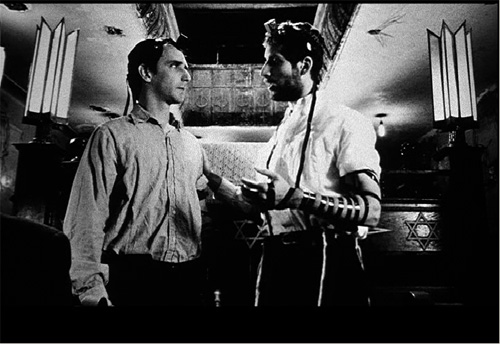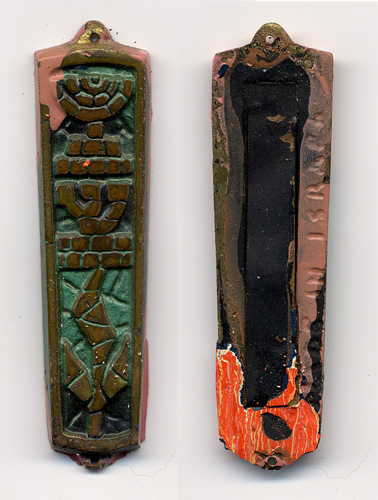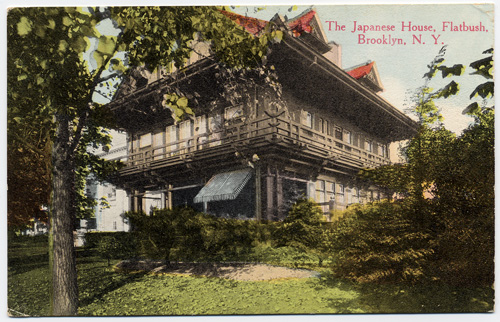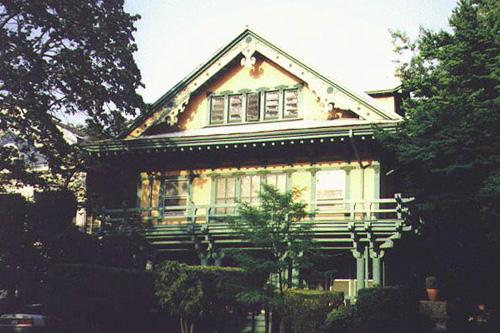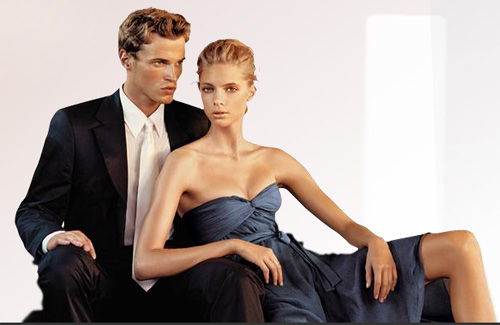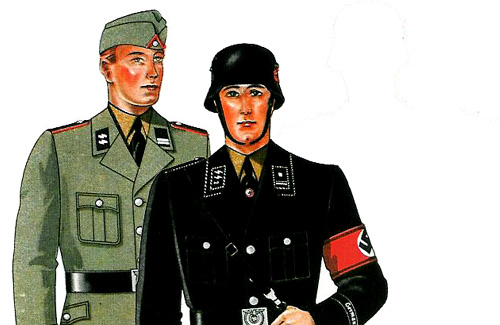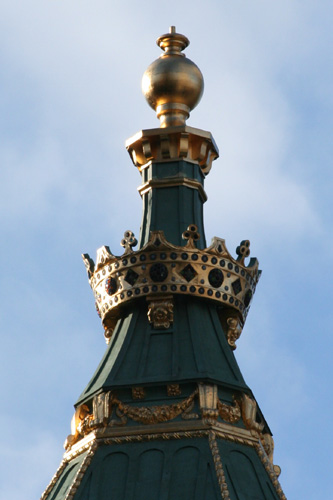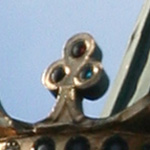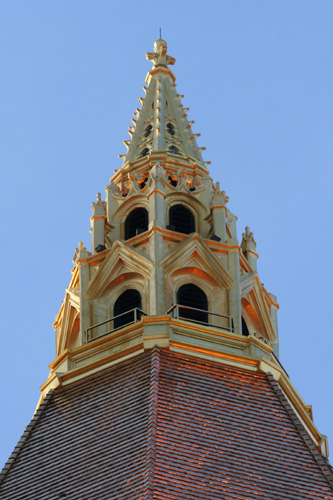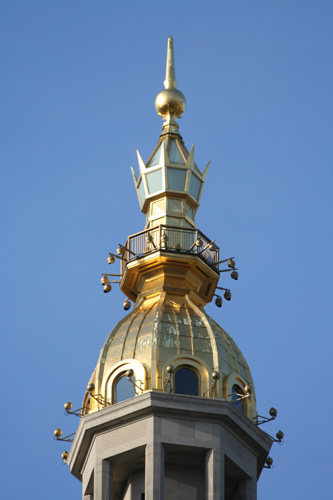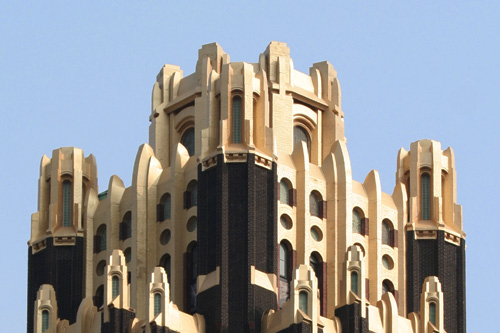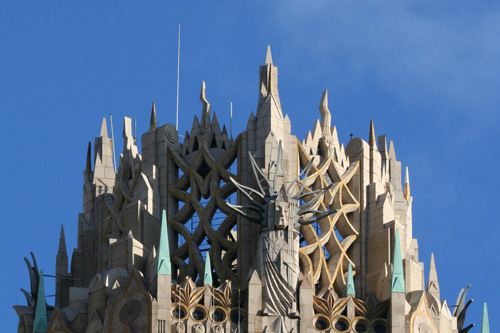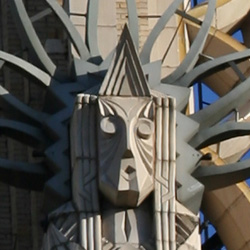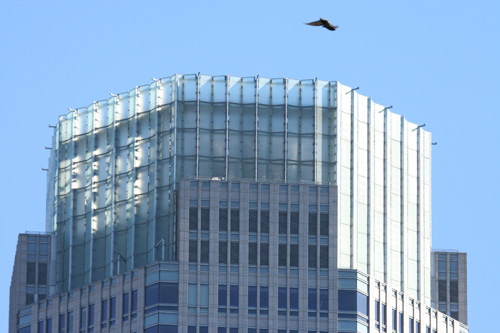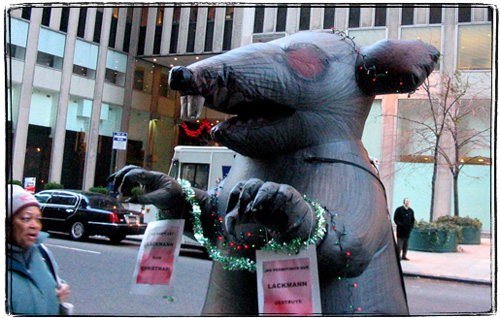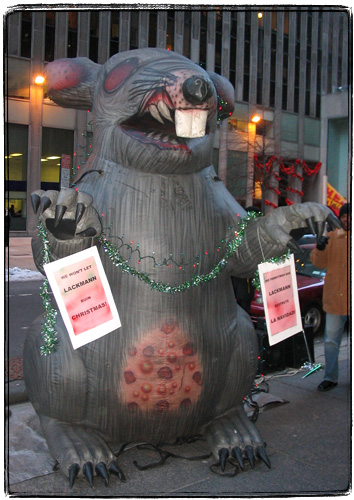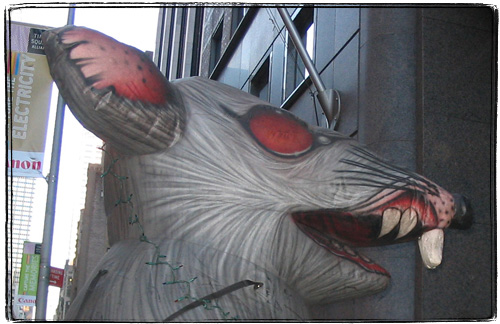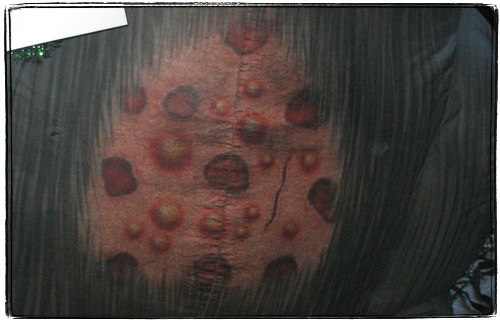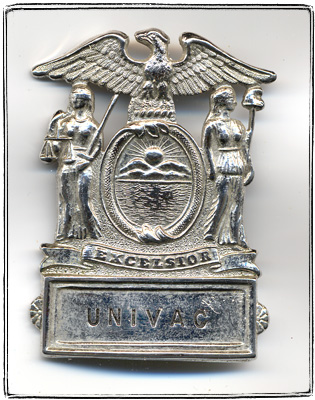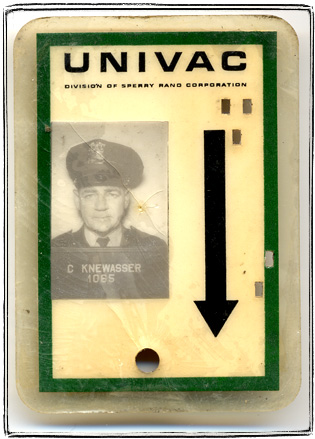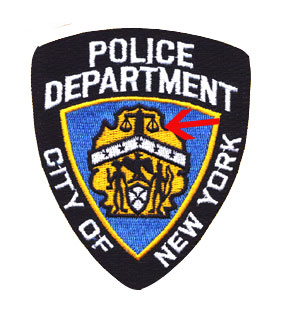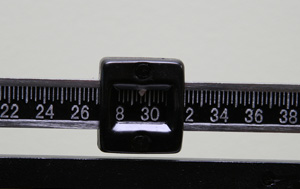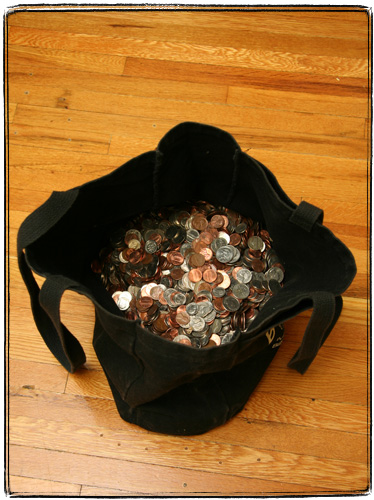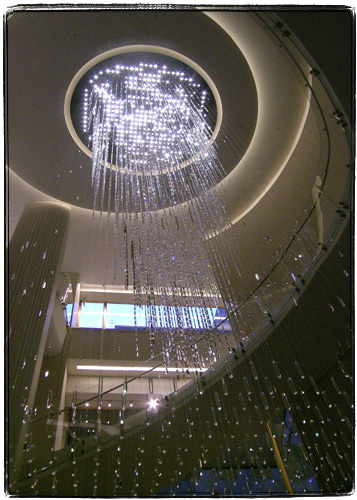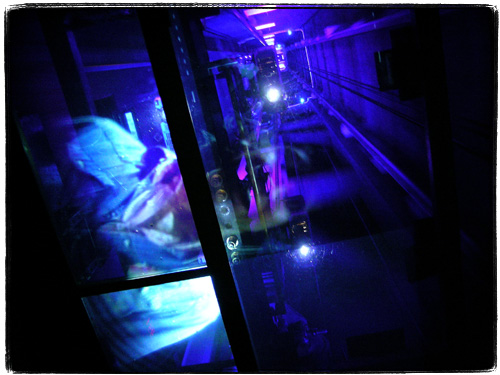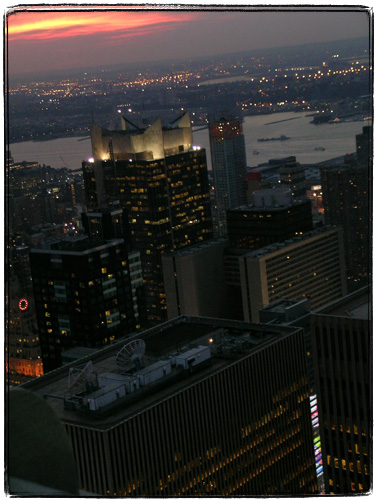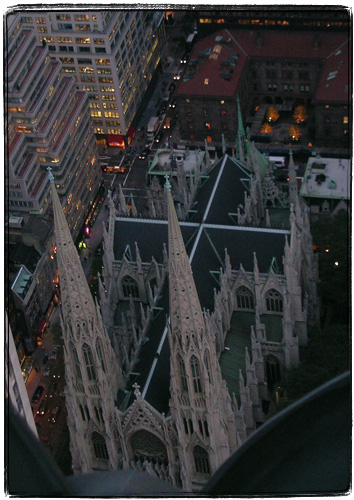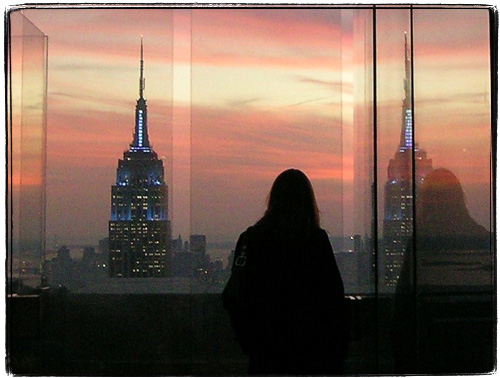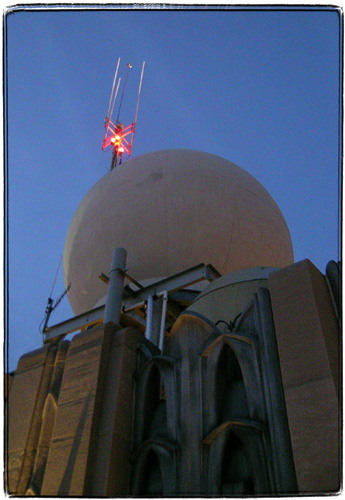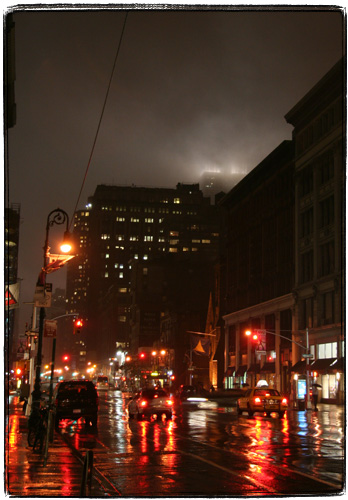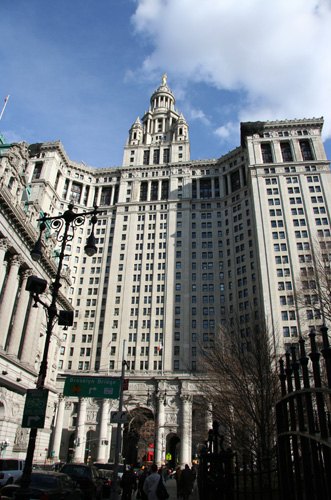
Municipal Building in Manhattan is said to be the one that directly influenced Soviet architecture because Stalin really liked its look. What was called “City Beautiful” style in America in 1880s, with some alterations became known as Stalin’s Empire, Stalinist Baroque, Socialist Classicism and simply as Mustachioed One’s Wedding Cakes. In fact there are 7 buildings in Moscow that look very much like it.
These 7 sisters, as the buildings are known are shrouded in legend. I’ve heard that because of the lack of metal girders their walls are tremendously thick at the bottom. I’ve heard that they go down into the ground as far as they go into the sky, that there are old explosive self-destruct charges left over in some of them, that there is a huge monument to Stalin stored in one of the huge cellars. I’ve heard that the super secret “Metro 2”, the secret subway running underneath them.
It’s very ironic that Stalin picked this very American, capitalist style for his favorite buildings. Even more ironic is the way that the Objectivists lead by Ayn Rand picked an art aestetic art aestetic very similar to socialist realism, maybe with a little more art deco thrown in.
There is a common theme that runs through Ayn Rand’s life and work – grand ideas and ideals not realized. Rand herself, was so obsessed with capital and investement, yet never invested much of her money. She opposed government monetary control, yet supported Objectivist #2 – Alan Greenspan himself.
Rand’s work is full of references to things that never came to life. In “Fountainhead”, Roark’s boss, Henry Cameron, has a blueprint of an unbuilt skyscraper on his wall. Also in that book, there’s the statue of “Industry” that never went in to the lobby of the fictional Cosmo-Slotnick Building, described as “.. a slender naked body of a man who looked as if he could break through the steel plate of a battleship …”.
I am endlessly fascinated with ghostly architecture. There’s a special space in my mind’s eye for ghost structures. The fictional ones, like Henry Cameron’s Dana Building. The destroyed ones – the World Trade Center, the Singer Building, the old Penn Station, the Zeppelin mooring tower on top of the Empire State Building, and many more. And the ones that were never built – like the 8th Stalinist sister, the Palace of the Soviets, with a gigantic statue of Lenin so big and so high up top, that it needs shortened legs and torso to preserve the perspective.
The very real Municipal Building also has a giant statue on its top. While not as huge as the Lenin one, still, in New York it’s only second to the Statue of Liberty in size. The statue by Adolf A. Weinman is called “Civic Fame”. She battled wind, rain, snow and smog for almost a hundred years now. Her hand dropped through a skylight in a cafeteria on 26th floor in ’36 and had to be repaired, and in ’91 she took a helicopter ride up and down for cleaning and further restorations.
The model for “Civic Fame”, Audrey Munson, had an even harder and more intense life. At the turn of the century she was a supermodel for sculptors and painters. In some sense that yielded a much more permanent record of her than most of today’s supermodels will enjoy as there are literally dozens of important sculptures of her in New York City and around the world bearing her likeness. When the movies came about, she became an actress and entered history books as the first known woman to star in a movie naked. Well, tastefully, as an artist’s model.
There’s a book about her life, the Wikipedia article, this woman had the most unusual and tragic life. From the height of fame, through the court case involving a doctor who killed his wife to be with her, to financial destitution and into the mental asylum at 39 where she died at the age of 104 (!).
I wonder what she felt like standing in front of the Municipal building, knowing that it was her at the very top, with a shield and a crown.
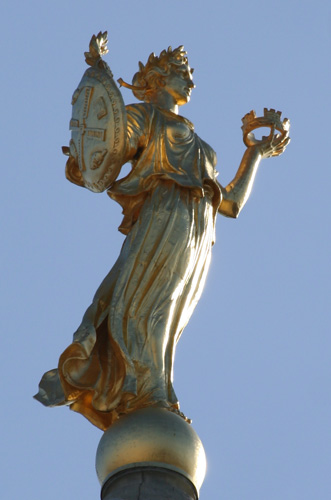
The city website says that the crown has some dolphins on it, but even with this magnification I can’t see them.
All I know is, now I just have to find as many instances of Audrey Munson in New York City’s buildings and museums. That will be an interesting photographic project. I wonder if it’s her on the Eastern Airlines Building mural.
